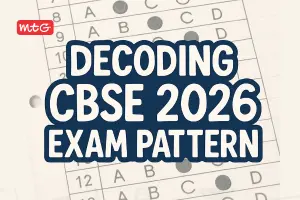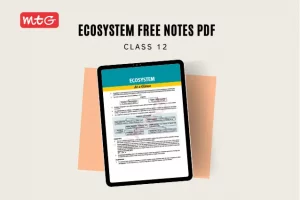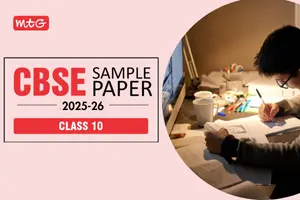The Class 10 Science MCQ questions on Electricity with Answers have been organized according to the latest exam pattern according to the Class 10 Science syllabus. These questions are designed to help students understand the concept thoroughly. They are not only helpful for revision but also for grasping the concepts effectively. The MCQ questions for Chapter 11 Electricity cover intext book questions and important topics to help students assess their preparation level for CBSE board exams.
CBSE Class 10 Chapter 11 Electricity MCQs
Check below the MCQ Questions for class 10 Science with answers and Clear your idea of chapter 11 Electricity.
Q.1. A metal rod of the length 10 cm and a rectangular cross-section of 1 cm × 1/2 cm is connected to a battery across opposite faces. The resistance will be
(a) maximum when the battery is connected across 1 cm × 1/2 cm faces
(b) maximum when the battery is connected across 10 cm × 1 cm faces
(c) maximum when the battery is connected across 10 cm × 1/2 cm faces
(d) same irrespective of the three faces.
Answer

Practice More – CBSE Practice Papers Class 10 (2024) – Free PDF Download
Q.2. The unit of resistivity is
(a) Ohm (b) Ampere
(c) Ohm-Ampere (d) Ohm-metre
Answer
Q.3. When a potential difference is applied across the two ends of the conductor, then an electric field due to applied potential difference exists
(a) outside the conductor
(b) inside the conductor
(c) both outside and inside the conductor
(d) no where.
Answer
(b): When a potential difference is applied across the two ends of a conductor, the electric field exists inside the conductor
Also Check – CBSE Sample Papers Class 10 for 2024 Board Exams
Q.4. If two identical heaters, each rated as 1000 W – 220 V; are connected in parallel to 220 V, then the total power consumed is
(a) 200 W (b) 2500 W
(c) 250 W (d) 2000 W
Answer
Q.5. Electrical resistivity of a given metallic wire depends upon
(a) its length
(b) its thickness
(c) its shape
(d) nature of the material.
Answer
Q.6. When the temperature of a metallic conductor is increased its resistance
(a) decreases (b) increases
(c) may increase or decrease
(d) remains the same.
Answer
Q.7. Four resistors of value 4 Ω are connected as shown in the figure. The equivalent resistance between the points A and B is:

(a) 3 Ω
(b) 4 Ω
(c) 6 Ω
(d) 1 Ω
Answer

Q.8. Three voltmeters all having different resistance are joined as shown. When some potential difference is applied across A and B, then readings in voltmeter are V1, V2 and V3

(a) V1 = V2 (b) V1 < V2
(c) V1 + V2 = V3 (d) V1 + V2 > V3
Answer

CBSE Class 10 Resources – Important Formula Book For 10th Science
Q.9. If p is the heat dissipated per second by a resistor maintained at a constant temperature and q is the potential difference across the resistor, then p is proportional toSelect the incorrect statement stated below related to concave mirror.
(a) q
(b) q2
(c) √q
(d) 1/q
Answer
Q.10. Which of the following graphs represents an ohmic resistance?

Answer
CBSE Class 10 Science Electricity MCQs – PDF Download
Answer-
Summary for NCERT class 10 science chapter 11 – “Electricity”
- A stream of electrons moving through a conductor constitutes an electric current. Conventionally, the direction of current is taken opposite to the direction of flow of electrons.
- The SI unit of electric current is ampere.
- To set the electrons in motion in an electric circuit, we use a cell or a battery. A cell generates a potential difference across its terminals. It is measured in volts (V).
- Resistance is a property that resists the flow of electrons in a conductor. It controls the magnitude of the current. The SI unit of resistance is ohm (Ω).
- Ohm’s law: The potential difference across the ends of a resistor is directly proportional to the current through it, provided its temperature remains the same.
- The resistance of a conductor depends directly on its length, inversely on its area of cross-section, and also on the material of the conductor.
- The equivalent resistance of several resistors in series is equal to the sum of their individual resistances.
- The electrical energy dissipated in a resistor is given by W = V × I × t
- The unit of power is watt (W). One watt of power is consumed when 1 A of current flows at a potential difference of 1 V.
- The commercial unit of electrical energy is kilowatt hour (kWh). 1 kW h = 3,600,000 J = 3.6 × 106
Best Reference Books for Class 10 Science
- NCERT Textbook + Exemplar Problems-Solutions
- Foundation Course Physics, Chemistry and Biology
- NCERT at your Fingertips Science
- 100 Percent Science
- CBSE 10 Years Chapterwise Topicwise Solved Papers AKA CBSE Champion
- CBSE Chapterwise Question Bank
- CBSE Score More 15 Sample Question Papers
We hope the MCQs for the CBSE Class 10 Science Chapter 11 on Electricity are helpful for your board exam preparation. Practice more with MTG CBSE Books for class 10 for success in your class 10 exams.
Keep learning and stay updated with us for more CBSE exam updates.






























